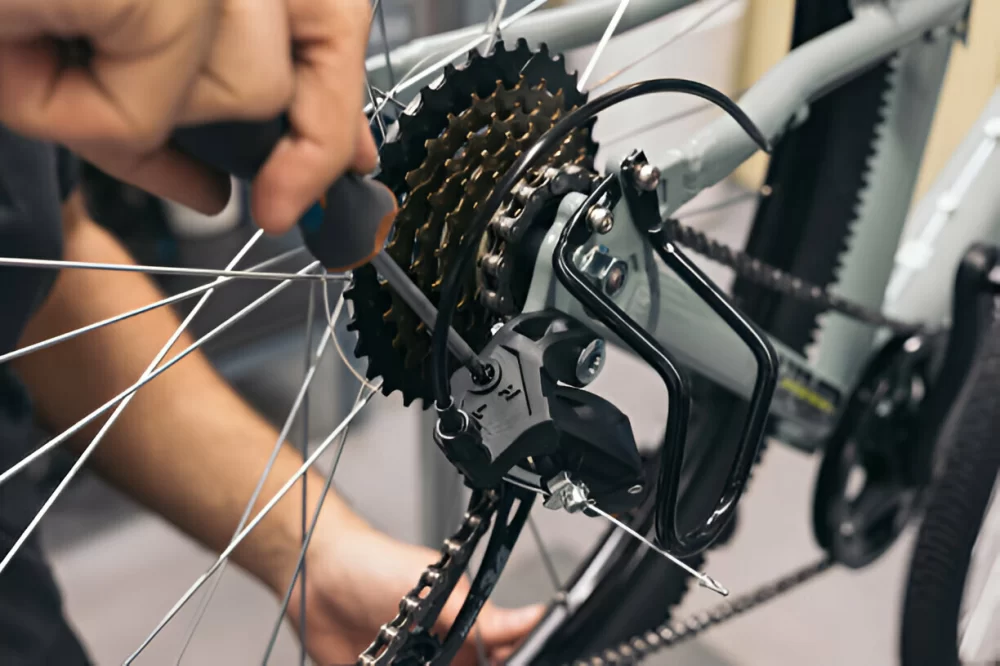
- Understanding Bike Gear Tuning and Its Importance
- Steps for Achieving Smooth Shifting Through Gear Tuning
- Common Gear Tuning Issues and How to Fix Them
- Real-Life Examples and Personal Insights on Gear Tuning
- Finding the Best Gear Components for Optimal Performance
Understanding Bike Gear Tuning and Its Importance
Bike gear tuning is an essential skill for any cyclist who wants to maintain a smooth and efficient riding experience. At its core, bike gear tuning involves adjusting the derailleurs, cables, and shifters to ensure that the chain moves precisely between gears without hesitation or noise. This process not only improves performance but also extends the lifespan of your bike components.
Why is smooth shifting so important? Imagine being on a challenging uphill ride or sprinting on a flat road, and your bike hesitates or slips gears. This disruption not only affects your momentum but can also be dangerous in certain situations. Proper gear tuning provides consistent and reliable gear changes, enhancing your control and confidence while cycling.
Many beginners overlook the importance of regular gear tuning, but it is as crucial as tire pressure or brake maintenance. A well-tuned bike can drastically improve your riding enjoyment and reduce costly repairs down the line.

Conte's Bike Shop
3449 Wilson Blvd, Arlington, VA 22201, USA
Key Components Involved in Gear Tuning
To understand the tuning process, you need to be familiar with the main components: the front and rear derailleurs, shifters, gear cables, and the cassette or freewheel. Each part plays a role in how smoothly your bike shifts gears. Adjusting tension in the cables and fine-tuning the limit screws on derailleurs are common steps in gear tuning.

Bicycle Barn LLC
839 Reading Rd, East Earl, PA 17519, USA
Steps for Achieving Smooth Shifting Through Gear Tuning
Performing a successful bike gear tuning requires a systematic approach. Below is a detailed guide to help you tune your gears effectively:
1. Inspect and Clean Your Drivetrain
Before making adjustments, ensure your chain, cassette, and chainrings are clean. Dirt and grime can cause poor shifting and unnecessary wear. Use a degreaser and a brush to clean thoroughly, then lubricate the chain with appropriate bike lubricant.
2. Check Cable Tension
Cable tension is critical. Too tight or too loose cables can cause the chain to skip or hesitate when shifting. Use the barrel adjuster on your derailleur or shifter to make small tension changes while testing shifts.
3. Adjust Limit Screws
The limit screws control the movement range of the derailleurs, preventing the chain from falling off the gears. Adjust these screws carefully to align the derailleur with the smallest and largest cogs without overextending.
4. Test Shifting Across All Gears
Shift through each gear slowly, listening for any delay or noise. If you notice hesitation, revisit cable tension or fine-tune the derailleur position. Repeat this process until all shifts are smooth and immediate.
Common Gear Tuning Issues and How to Fix Them
Even experienced cyclists encounter gear shifting problems. Here are some frequent issues and practical ways to address them:
Chain Skipping
Often caused by worn cassette teeth or a stretched chain. Replacing these parts can restore smooth shifting. Regular maintenance helps prevent this problem from escalating.
Slow or Sticky Shifting
This usually points to dirty or rusty cables. Cleaning or replacing cables and housing often solves the issue. In some cases, lubricating the derailleur pivots can also help.
Chain Dropping
Improper limit screw adjustment or a bent derailleur hanger may cause the chain to drop off the gears. Realigning the derailleur or replacing a damaged hanger will improve reliability.
Real-Life Examples and Personal Insights on Gear Tuning
As an avid cyclist, I once faced a frustrating issue where my rear derailleur would skip gears unpredictably during a long ride. After multiple attempts at quick fixes, I took the time to carefully clean my drivetrain and perform a thorough cable tension adjustment. The difference was remarkable — shifting became crisp and reliable, transforming the ride experience entirely.
Similarly, professional cyclists often share how subtle gear tuning adjustments before races can shave precious seconds and improve power transfer. These real-world examples emphasize the importance of investing time in proper gear tuning rather than overlooking it.
Stories from the Cycling Community
One popular story involves a rider who discovered that a minor misalignment in their front derailleur was causing frequent chain drops on steep climbs. After a detailed tutorial from a local bike shop and persistent tuning, their confidence and performance soared, highlighting how even small tweaks can lead to big improvements.
Finding the Best Gear Components for Optimal Performance
While tuning is essential, having quality components designed for smooth shifting can make a significant difference. High-end shifters and derailleurs often feature more precise engineering, easier adjustments, and better durability.
For cyclists looking to upgrade or maintain their bikes, Healthy Cycling offers a range of products and expert advice tailored to your needs. Whether you want premium gear sets or reliable maintenance tools, their recommendations ensure you get components that complement your tuning efforts for a seamless cycling experience.
Why Invest in Quality Gear Components?
Good components reduce the frequency of tuning required and often make the tuning process itself easier. They also tend to last longer and perform consistently under various riding conditions. Combined with proper tuning skills, quality gear parts create the foundation for the smoothest shifting possible.










